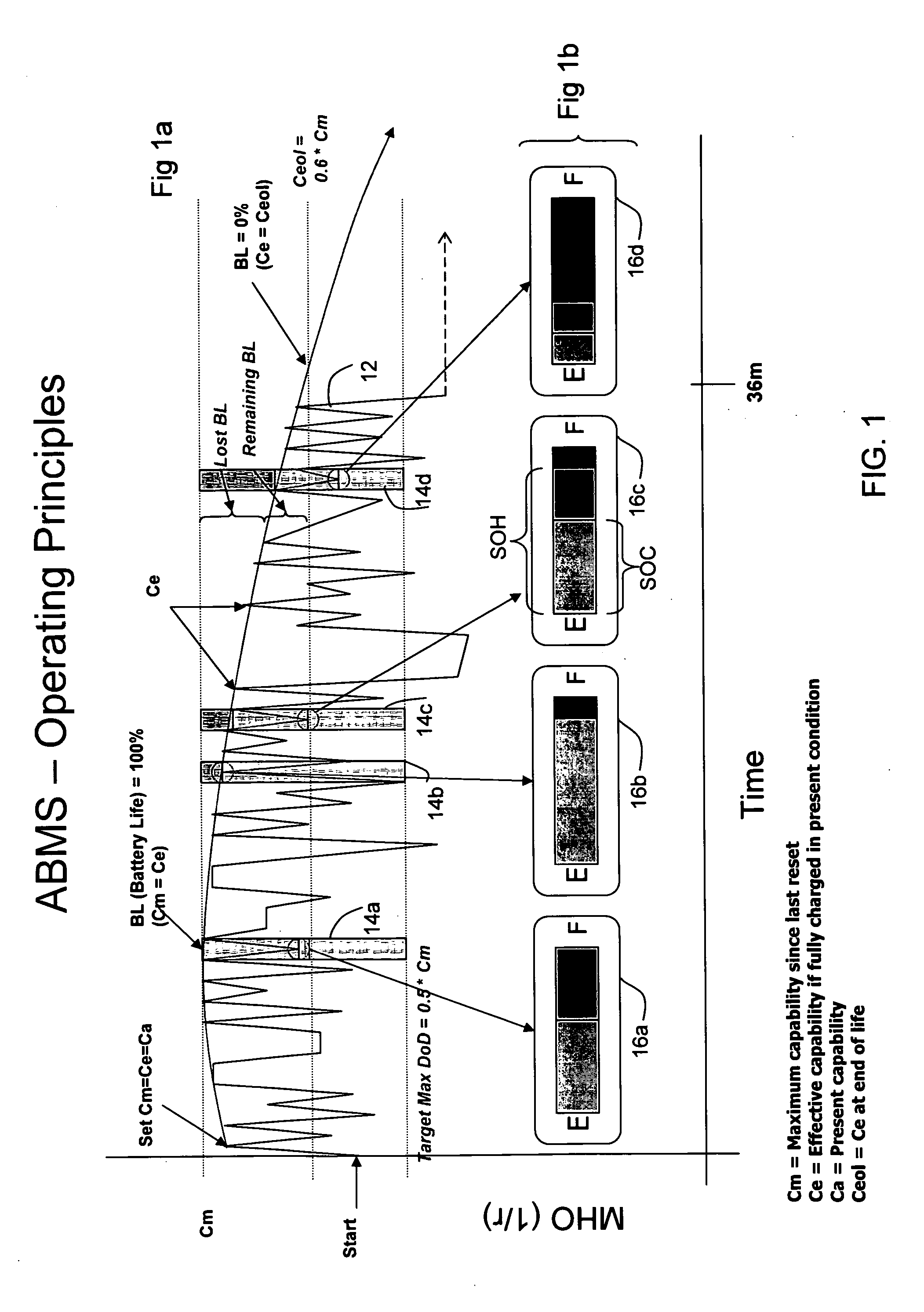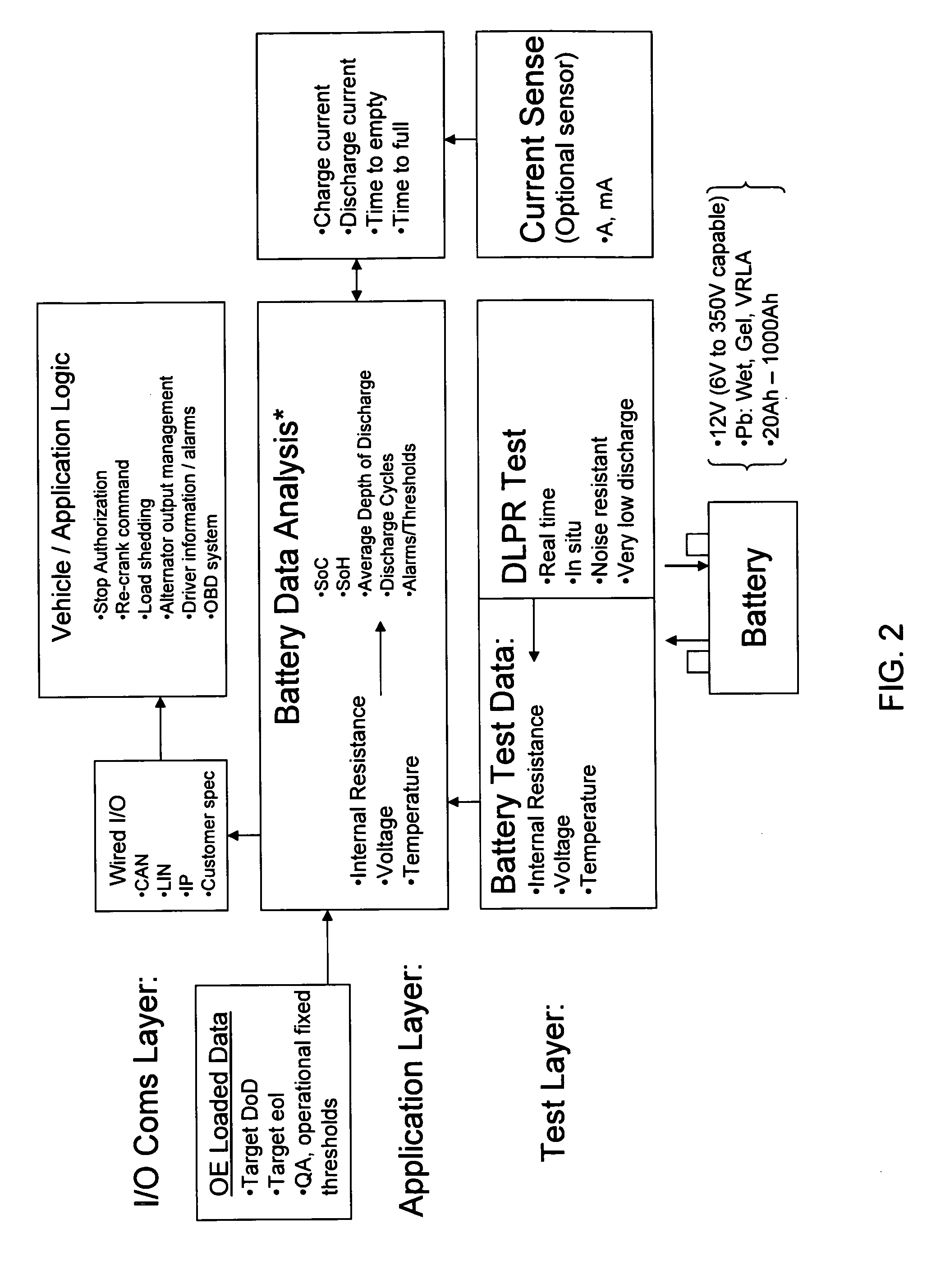Battery performance monitor
a battery and monitor technology, applied in battery/fuel cell control arrangement, secondary cell servicing/maintenance, instruments, etc., can solve the problems of battery being deemed to be discharged erroneously, actual discharge profile change, measured voltage will be significantly affected, etc., and achieve the effect of improving the equipment for battery evaluation
- Summary
- Abstract
- Description
- Claims
- Application Information
AI Technical Summary
Benefits of technology
Problems solved by technology
Method used
Image
Examples
Embodiment Construction
[0077]The following description of the preferred embodiments of the invention essentially includes the text of provisional application Ser. No. 60 / 935,017, from which the present complete application claims priority, although corrections and clarifications have been made. Following this, there is a detailed discussion of further discoveries and associated improvements made subsequently. Ser. No. 60 / 935,017 and the Appendices with which it was filed are incorporated herein by this reference. Further, applicants reserve their right to submit additional claims to any particulars disclosed therein and not claimed as of the initial filing of this application.
Stand-Alone Engine Starting Battery Monitor
[0078]In one aspect of the invention, a stand-alone apparatus and method of monitoring an engine starting battery are provided. A monitoring device is physically secured to a battery, and is electrically connected to the battery terminals, such that the device can continuously monitor the ba...
PUM
| Property | Measurement | Unit |
|---|---|---|
| charging current | aaaaa | aaaaa |
| conductance Cc | aaaaa | aaaaa |
| conductance Cn | aaaaa | aaaaa |
Abstract
Description
Claims
Application Information
 Login to View More
Login to View More - R&D
- Intellectual Property
- Life Sciences
- Materials
- Tech Scout
- Unparalleled Data Quality
- Higher Quality Content
- 60% Fewer Hallucinations
Browse by: Latest US Patents, China's latest patents, Technical Efficacy Thesaurus, Application Domain, Technology Topic, Popular Technical Reports.
© 2025 PatSnap. All rights reserved.Legal|Privacy policy|Modern Slavery Act Transparency Statement|Sitemap|About US| Contact US: help@patsnap.com



